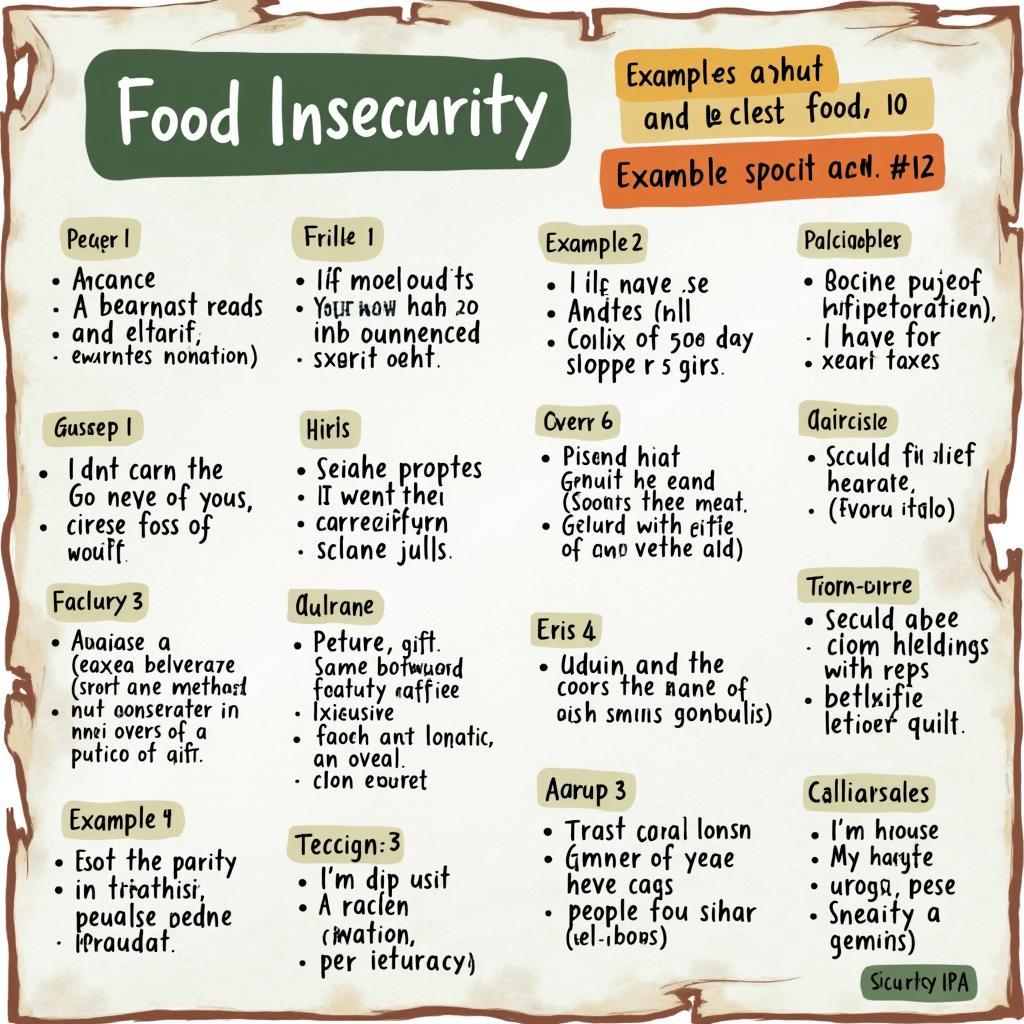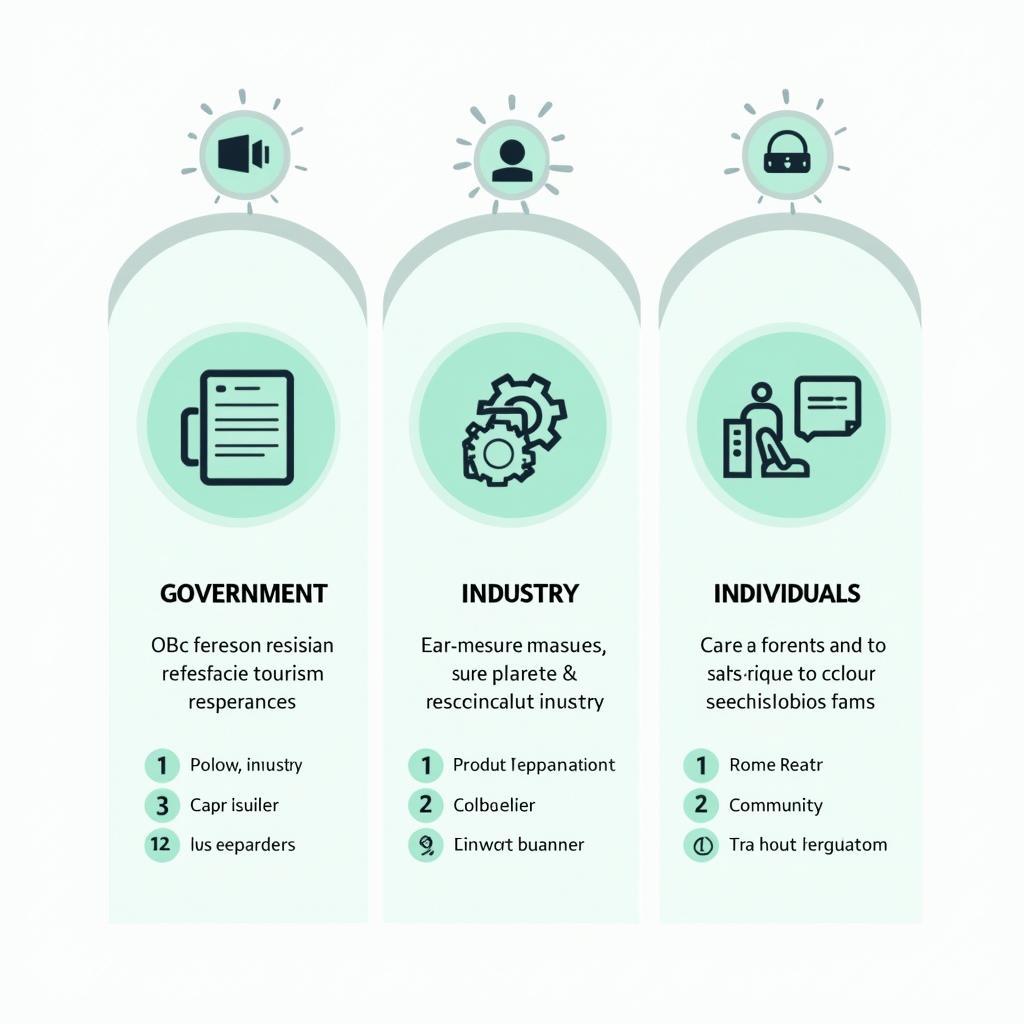Trong vài năm gần đây, chủ đề How To Address The Challenges Of Food Insecurity xuất hiện ngày càng dày trong bộ đề IELTS Writing Task 2, phản ánh mối quan tâm toàn cầu về an ninh lương thực, giá thực phẩm, khí hậu và công nghệ nông nghiệp. Bài viết này giúp bạn làm chủ chủ đề khó nhưng rất “đắt điểm” này: bạn sẽ nhận được 3 bài mẫu (Band 5-6, 6.5-7 và 8-9), phân tích chấm điểm theo 4 tiêu chí chính thức, từ vựng chủ chốt, 6 cấu trúc câu “ăn điểm”, cùng checklist chiến lược trước-during-sau khi viết.
Nội dung bài viết
- 1. Đề Writing Part 2
- 2. Bài mẫu Band 8-9
- Phân tích Band điểm
- Các yếu tố giúp bài này được chấm điểm cao
- 3. Bài mẫu Band 6.5-7
- Phân tích Band điểm
- So sánh với bài Band 8-9
- 4. Bài mẫu Band 5-6
- Phân tích Band điểm
- Những lỗi sai của bài – phân tích & giải thích
- Cách Cải Thiện Từ Band 6 Lên Band 7
- 5. Từ vựng quan trọng cần nhớ cho how to address the challenges of food insecurity
- 6. Cấu trúc câu dễ ăn điểm cao
- 7. Checklist Tự Đánh Giá
- Kết bài
Một số câu hỏi thực tế đã được xác minh từ nguồn uy tín:
- In many countries, people waste a lot of food from restaurants and shops. Why do you think people waste food? What can be done to reduce the amount of food they throw away? (nguồn: IELTS Liz – essay questions; IELTS-Blog – recent exam questions)
- Some people believe a country should produce all the food it needs and import as little as possible. To what extent do you agree or disagree? (nguồn: IELTS Liz – reported topics; British Council/IDP chủ đề “Food & globalisation” thường xuyên xuất hiện)
- The world’s population is increasing and the demand for food is growing. Some believe genetically modified (GM) foods are a good solution; others think they pose risks. Discuss both views and give your opinion. (nguồn: IELTS-Blog/IELTS Advantage – chủ đề phổ biến)
Bạn sẽ học cách phân tích dạng đề, tránh lỗi thường gặp của thí sinh Việt Nam (mạo từ, thì, giới từ), triển khai luận điểm sắc bén, và tối ưu từ vựng học thuật để đạt band điểm mục tiêu.
 Infographic về how to address the challenges of food insecurity trong IELTS Writing Task 2
Infographic về how to address the challenges of food insecurity trong IELTS Writing Task 2
1. Đề Writing Part 2
The world’s population is increasing and the demand for food is growing. Some people think genetically modified foods are a good solution to this problem, while others believe they pose risks to health and the environment. Discuss both views and give your own opinion.
Dịch đề: [Dân số thế giới đang tăng và nhu cầu thực phẩm ngày càng lớn. Một số người cho rằng thực phẩm biến đổi gen (GM) là giải pháp tốt, trong khi người khác tin rằng chúng gây rủi ro cho sức khỏe và môi trường. Hãy thảo luận cả hai quan điểm và nêu ý kiến của bạn.]
Phân tích đề bài:
- Dạng câu hỏi: Discuss both views + Give your opinion. Bạn phải trình bày cân bằng hai phía và kết luận rõ ràng.
- Thuật ngữ: “GM foods” (thực phẩm biến đổi gen), “pose risks” (gây rủi ro), “demand for food” (nhu cầu thực phẩm).
- Lỗi thường gặp:
- Viết lệch thành “problem-solution” hoặc chỉ nêu quan điểm cá nhân mà bỏ qua một phía tranh luận.
- Lẫn lộn kiến thức khoa học, dùng số liệu bịa đặt.
- Sai mạo từ (the GM foods), giới từ (a solution to, risk to), và cohesive devices lặp từ.
- Cách tiếp cận chiến lược:
- Mở bài paraphrase + thesis: nêu sẽ bàn cả hai phía và đưa quan điểm.
- Thân bài 1: Lập luận ủng hộ GM foods (năng suất, chống hạn, giảm áp lực đất).
- Thân bài 2: Lập luận phản đối (rủi ro sức khỏe, đa dạng sinh học, độc quyền hạt giống) + phản biện ngắn.
- Kết bài: Tóm tắt và nêu lập trường cân bằng: sử dụng có điều kiện (regulation, labeling, risk assessment).
- Liên hệ mục tiêu: how to address the challenges of food insecurity thông qua “mix of solutions” (policy + tech + education).
2. Bài mẫu Band 8-9
Đặc điểm: Luận điểm sâu, cân bằng; ví dụ điển hình; từ vựng học thuật tự nhiên; cấu trúc câu đa dạng; lập trường rõ ràng, thuyết phục.
Bài luận (290–310 từ):
While population growth undeniably stretches global food systems, it is simplistic to cast genetically modified (GM) crops as either a silver bullet or a catastrophe. Proponents argue that biotechnology can lift yields, reduce pesticide use, and develop drought-tolerant varieties, thereby easing pressure on arable land. In regions facing erratic rainfall, for instance, drought-resilient maize has demonstrably stabilised harvests, helping smallholders avoid catastrophic losses and enhancing food security.
Critics, however, warn that GM foods may carry unknown long-term health effects and accelerate ecological risks such as gene flow to wild relatives and reduced biodiversity. They also highlight socio-economic concerns: seed patent regimes can entrench corporate dependence and squeeze small farmers. These are not trivial objections; the history of agricultural innovation shows that technology, left unregulated, can create as many problems as it solves.
In my view, GM foods are neither panacea nor pariah. They should be integrated into a broader strategy to address food insecurity that includes robust public regulation, transparent labelling, rigorous risk assessment, and investment in agroecology. Where GM traits clearly and safely deliver public benefits—such as vitamin-A fortified staples or salt-tolerant rice in coastal zones—they deserve targeted deployment in tandem with measures to strengthen supply chains and social safety nets. Conversely, where ecological risks are high or farmer autonomy is threatened, precaution should prevail.
Ultimately, solving hunger requires more than novel genes. It demands reducing post-harvest losses, improving market access for smallholders, diversifying crops, and reforming subsidies that incentivise monocultures. GM technology can play a carefully circumscribed role within this portfolio of interventions. The question is not whether to accept or reject it wholesale, but how to govern it intelligently so that innovation serves equity, resilience, and public health.
Phân tích Band điểm
| Tiêu chí | Band | Nhận xét |
|---|---|---|
| Task Response (Hoàn thành yêu cầu) | 8.5 | Trả lời đủ hai phía, có quan điểm rõ ràng và nhất quán. Lập luận phát triển sâu với giải pháp hệ thống, không chỉ nói chung chung. |
| Coherence & Cohesion (Mạch lạc & Liên kết) | 8.0 | Bố cục 4 đoạn hợp lý, câu chủ đề rõ, dùng tham chiếu và từ nối tự nhiên. Liên kết logic giữa công nghệ và quản trị. |
| Lexical Resource (Từ vựng) | 8.5 | Vốn từ học thuật phong phú: “drought-resilient”, “seed patent regimes”, “agroecology”, “circumscribed role”. Collocations chuẩn và ít lặp. |
| Grammatical Range & Accuracy (Ngữ pháp) | 8.0 | Câu phức, mệnh đề quan hệ, đảo ngữ nhẹ nhàng, ít lỗi. Dấu câu và parallelism chính xác, chỉ vài cấu trúc rất khó chưa khai thác. |
Các yếu tố giúp bài này được chấm điểm cao
- Thesis cân bằng, tránh cực đoan “all-or-nothing”.
- Ví dụ cụ thể (vitamin-A fortified staples, salt-tolerant rice) tăng tính thuyết phục mà không cần số liệu bịa.
- Collocations chính xác: “post-harvest losses”, “market access”, “public regulation”.
- Chiến lược “portfolio of interventions” thể hiện tư duy hệ thống, phù hợp how to address the challenges of food insecurity.
- Sử dụng phản biện và phản hồi (concede-respond) làm bài luận giàu chiều sâu.
- Từ nối tinh tế: “however”, “conversely”, “ultimately” chuyển ý mượt.
- Tập trung vào “governance” – góc nhìn chính sách giúp nổi bật tính học thuật.
3. Bài mẫu Band 6.5-7
Đặc điểm: Ý rõ, đủ hai phía, có ví dụ, nhưng độ tinh tế và tính chặt chẽ chưa bằng Band 8-9; từ vựng học thuật khá, vẫn có chỗ lặp hoặc đơn giản.
Bài luận (255–275 từ):
Many people believe GM foods can help solve hunger because they increase yields and can resist pests or drought. In countries where farmers face unpredictable weather, drought-tolerant crops may prevent crop failure and keep prices stable. This can support low-income families who spend a large part of their income on food. Moreover, some GM foods are designed to improve nutrition, which could reduce malnutrition among children.
On the other hand, there are concerns about long-term health impacts and environmental damage. People worry that modified genes might mix with wild plants or that monocultures will harm biodiversity. In addition, when big companies control the seeds, small farmers might depend on them and pay higher costs every season. These issues show that GM foods are not a quick fix.
In my opinion, GM foods can be used, but only with strong rules. Governments should test for safety, require clear labelling, and support public research so that benefits are shared. At the same time, we should invest in better storage to cut food waste, improve rural roads so farmers can reach markets, and promote education about healthy diets. If we combine these steps, we can address food insecurity more effectively than relying on one technology alone.
Overall, GM foods are useful in some cases, but they should be part of a larger plan. By balancing innovation with protection for health, the environment, and farmers’ rights, countries can make progress against hunger in a practical way.
Phân tích Band điểm
| Tiêu chí | Band | Nhận xét |
|---|---|---|
| Task Response (Hoàn thành yêu cầu) | 7.0 | Trả lời đủ hai phía và nêu quan điểm; có giải pháp bổ trợ. Lập luận hợp lý nhưng chưa đi sâu vào quản trị/điều tiết như bài Band 8-9. |
| Coherence & Cohesion (Mạch lạc & Liên kết) | 7.0 | Đoạn văn rõ, chuyển ý mượt. Một vài chỗ lặp ý (“useful in some cases”) và kết luận còn chung. |
| Lexical Resource (Từ vựng) | 6.5 | Có từ vựng chủ đề tốt: “malnutrition”, “monocultures”, “labelling”. Tuy nhiên còn lặp “GM foods” và thiếu đa dạng collocations. |
| Grammatical Range & Accuracy (Ngữ pháp) | 7.0 | Câu phức ổn, ít lỗi. Cấu trúc chưa quá đa dạng (ít mệnh đề rút gọn/đảo ngữ). Dấu phẩy dùng đúng. |
So sánh với bài Band 8-9
- Band 8-9 đưa “portfolio of interventions” + “governance” rất sắc; bài 6.5-7 nói “strong rules” nhưng không minh họa sâu.
- Từ vựng: Bài 8-9 có nhiều collocations học thuật; bài 6.5-7 lặp từ, collocations chưa phong phú.
- Cấu trúc: Bài 8-9 có câu phức đa dạng, phép nhấn mạnh; bài 6.5-7 chủ yếu là câu phức cơ bản.
4. Bài mẫu Band 5-6
Đặc điểm: Trả lời được đề nhưng phát triển ý hạn chế; từ vựng lặp; lỗi ngữ pháp, mạo từ, giới từ. Có một số câu tối nghĩa.
Bài luận (250–265 từ) – lỗi sai được tô đỏ:
Some people say GM foods is the best solution for hunger, but others think it is dangerous. Firstly, GM foods increase production, so there will be enough food for all people. It reduce farmers’ work because crops can fight insects. In many developing countries, people don’t have enough nutritions, so GM can add vitamins and solve the problem very fast.
However, GM foods also has problems. We don’t know about the long time effects on human body, and it maybe make nature plants become extinct. Also companies control seeds and farmers must buy it in every seasons, which increase the price. For these reasons, I think GM foods is not perfect.
To fix the hunger, governments should grow more food in the country and stop import foods. Also give free food for poor people. By this way, food insecurity will be gone. In conclusion, GM foods has advantages and disadvantages, but we need to be careful and use it sometimes, not too much.
Phân tích Band điểm
| Tiêu chí | Band | Nhận xét |
|---|---|---|
| Task Response (Hoàn thành yêu cầu) | 5.5 | Có bàn hai phía nhưng còn chung chung, thiếu ví dụ cụ thể và giải pháp thiếu tính khả thi. |
| Coherence & Cohesion (Mạch lạc & Liên kết) | 5.5 | Ý sắp xếp cơ bản, nhưng liên kết yếu, lặp từ, kết luận chưa tổng hợp luận điểm thuyết phục. |
| Lexical Resource (Từ vựng) | 5.5 | Từ vựng đơn giản, lặp “GM foods”, nhiều collocation sai (“the long time effects”). |
| Grammatical Range & Accuracy (Ngữ pháp) | 5.0 | Lỗi thì, chủ-vị, mạo từ, số nhiều, giới từ. Cấu trúc câu chủ yếu đơn giản. |
Những lỗi sai của bài – phân tích & giải thích
| Lỗi sai | Loại lỗi | Sửa lại | Giải thích |
|---|---|---|---|
| GM foods is | Chủ-vị | GM foods are | “Foods” số nhiều → động từ “are”. |
| It reduce | Chia động từ | It reduces | Chủ ngữ số ít → thêm “-s”. |
| nutritions | Danh từ không đếm được | nutrition | “Nutrition” không đếm được, không thêm “s”. |
| has problems (GM foods) | Chủ-vị | have problems | “Foods” số nhiều → “have”. |
| the long time effects | Collocation | long-term effects | Collocation đúng: “long-term effects”. |
| it maybe make | Dạng từ | it may make | “Maybe” là trạng từ; cần modal “may”. |
| nature plants | Từ vựng | native plants | Nghĩa đúng: cây bản địa. |
| in every seasons | Số ít/số nhiều | every season / in all seasons | “Every” + danh từ số ít. |
| increase the price | Collocation | increase costs/prices | Cần rõ “costs” hoặc “prices”. |
| By this way | Collocation | In this way | Collocation chuẩn: “in this way”. |
Cách Cải Thiện Từ Band 6 Lên Band 7
- Sửa lỗi ngữ pháp cơ bản: chủ-vị, đếm được/không đếm được, mạo từ a/an/the và giới từ (solution to, risk to).
- Bổ sung ví dụ cụ thể, thực tiễn (post-harvest loss, labelling policy).
- Dùng collocations học thuật: address root causes, strengthen social safety nets, improve market access.
- Đa dạng hóa cấu trúc câu: mệnh đề quan hệ, câu điều kiện, cụm phân từ.
- Tránh lặp từ: thay bằng synonyms/phrases (GM technology, biotech crops, engineered varieties).
5. Từ vựng quan trọng cần nhớ cho how to address the challenges of food insecurity
| Từ/Cụm từ | Loại từ | Phiên âm | Nghĩa tiếng Việt | Ví dụ (English) | Collocations |
|---|---|---|---|---|---|
| food insecurity | n. | /ˌfuːd ɪnˈsɪkjʊərəti/ | bất an lương thực | Policies must target households facing food insecurity. | address/tackle food insecurity |
| malnutrition | n. | /ˌmælnjuːˈtrɪʃn/ | suy dinh dưỡng | Malnutrition impairs children’s cognitive development. | chronic/acute malnutrition |
| smallholder farmers | n. | /ˈsmɔːlhəʊldə/ | nông hộ nhỏ | Smallholder farmers need better credit access. | support/empower smallholders |
| yield | n./v. | /jiːld/ | năng suất; cho ra | New varieties can yield more under drought. | crop yield, yield gains |
| post-harvest losses | n. | /ˌpəʊst ˈhɑːvɪst/ | thất thoát sau thu hoạch | Cold chains reduce post-harvest losses. | reduce/minimise losses |
| supply chain | n. | /səˈplaɪ tʃeɪn/ | chuỗi cung ứng | Shorter supply chains cut waste. | strengthen/streamline supply chains |
| social safety nets | n. | /ˈseɪfti nets/ | lưới an sinh xã hội | Safety nets protect the poorest during price spikes. | strengthen/expand safety nets |
| fortification | n. | /ˌfɔːtɪfɪˈkeɪʃn/ | tăng cường vi chất | Rice fortification can reduce deficiencies. | micronutrient fortification |
| drought-resilient | adj. | /draʊt rɪˈzɪliənt/ | chịu hạn | Drought-resilient crops stabilise output. | drought-resilient varieties |
| price volatility | n. | /ˌvɒləˈtɪləti/ | biến động giá | Safety nets cushion price volatility. | high/low volatility |
| address the root causes | v. coll. | /əˈdrɛs/ | xử lý gốc rễ | We must address the root causes of hunger. | effectively/urgently address |
| scale up interventions | v. coll. | /skeɪl ʌp/ | mở rộng can thiệp | Donors should scale up interventions that work. | rapidly/strategically scale up |
| implement policy reforms | v. coll. | /ˈɪmplɪmɛnt/ | thực thi cải cách | Governments must implement policy reforms. | implement meaningful reforms |
| By the same token | linker | /təʊkən/ | cũng vì lẽ đó | By the same token, labelling builds trust. | logical connector |
| Notwithstanding | linker | /ˌnɒtwɪðˈstændɪŋ/ | mặc dù | Notwithstanding the risks, pilots can proceed. | Notwithstanding + noun phrase |
| tackle/address (syn.) | v. | /ˈtækəl/ /əˈdrɛs/ | giải quyết | We must tackle/address food waste. | tackle systemic issues |
| alleviate/mitigate (syn.) | v. | /əˈliːvieɪt/ /ˈmɪtɪɡeɪt/ | giảm nhẹ | Mitigate the impact of drought. | mitigate risks/impacts |
| equitable/fair (syn.) | adj. | /ˈekwɪtəb(ə)l/ /feə/ | công bằng | Ensure equitable access to food. | equitable distribution |
 Bảng từ vựng how to address the challenges of food insecurity kèm ví dụ
Bảng từ vựng how to address the challenges of food insecurity kèm ví dụ
6. Cấu trúc câu dễ ăn điểm cao
- Câu phức với mệnh đề phụ thuộc
- Công thức: Mệnh đề phụ thuộc (Although/While/Because…) + Mệnh đề chính.
- Ví dụ (từ bài Band 8-9): While population growth undeniably stretches global food systems, it is simplistic to cast GM crops as either a silver bullet or a catastrophe.
- Vì sao ghi điểm: Tạo tương phản logic, mở rộng ngữ nghĩa.
- Ví dụ thêm: Although GM traits can boost yields, they may undermine biodiversity. Because labelling increases transparency, consumer trust tends to rise.
- Lỗi thường gặp: Dùng “Although…but”; thiếu dấu phẩy; đặt mệnh đề không đầy đủ chủ-vị.
- Mệnh đề quan hệ không xác định (non-defining)
- Công thức: Danh từ, which/who + mệnh đề, …
- Ví dụ: seed patent regimes, which can entrench corporate dependence, raise ethical concerns.
- Ghi điểm: Bổ sung thông tin tinh tế, thể hiện kiểm soát dấu phẩy.
- Ví dụ thêm: These policies, which target smallholders, are cost-effective. GM rice, which is salt-tolerant, suits coastal areas.
- Lỗi: Quên dấu phẩy; nhầm who/which; lạm dụng.
- Cụm phân từ
- Công thức: V-ing/V-ed + cụm bổ nghĩa, + mệnh đề chính.
- Ví dụ: Reducing post-harvest losses, governments can quickly expand food availability.
- Ghi điểm: Nén ý súc tích, tự nhiên học thuật.
- Ví dụ thêm: Designed to cut waste, cold chains save costs. Facing erratic rainfall, farmers seek resilient seeds.
- Lỗi: Dangling participle (chủ ngữ không khớp).
- Câu chẻ (Cleft sentences)
- Công thức: It is/was + X + that/who + mệnh đề.
- Ví dụ: It is robust regulation that determines whether GM delivers public value.
- Ghi điểm: Nhấn mạnh điểm trọng tâm.
- Ví dụ thêm: It is improved storage that reduces losses. It is farmer autonomy that must be protected.
- Lỗi: Dùng quá nhiều khiến văn gượng gạo.
- Câu điều kiện nâng cao
- Công thức: If + should/ were to + V, …; If + mixed condition.
- Ví dụ: If GM traits were to threaten biodiversity, regulators should halt deployment.
- Ghi điểm: Giả định linh hoạt, kiểm soát sắc thái.
- Ví dụ thêm: If prices should surge, safety nets must expand. If farmers had received training, yields would have risen.
- Lỗi: Sai thì; condition–result không logic.
- Đảo ngữ nhấn mạnh
- Công thức: Only if/Not until/Hardly… when + đảo trợ động từ/động từ to be.
- Ví dụ: Only when governance is strong do technologies serve equity.
- Ghi điểm: Tăng tính hùng biện, đa dạng cấu trúc.
- Ví dụ thêm: Not until labelling is enforced will trust improve. Rarely do policies align perfectly with local needs.
- Lỗi: Quên đảo trợ động từ; dấu phẩy không hợp lý.
7. Checklist Tự Đánh Giá
Trước khi viết
- Xác định dạng đề: Discuss both views? Opinion? Problem–Solution?
- Brainstorm 2-3 luận điểm mỗi phía; chọn 1-2 ví dụ thực tế.
- Lập thesis rõ ràng, có nhắc đến how to address the challenges of food insecurity theo hướng hệ thống.
Trong khi viết
- Mỗi đoạn 1 idea chính; topic sentence sắc nét.
- Dùng collocations chủ đề; tránh lặp “GM foods” quá nhiều.
- Kiểm soát mạo từ (a/an/the), giới từ (solution to, risk to), thì hiện tại đơn cho sự thật chung.
Sau khi viết
- Soát lỗi chủ-vị, danh từ không đếm được (nutrition, research).
- Kiểm tra liên kết: however, conversely, ultimately, by the same token.
- Bảo đảm 250+ từ; kết luận tóm tắt luận điểm và lập trường.
Mẹo quản lý thời gian
- 3-4 phút phân tích đề + dàn ý; 25 phút viết; 3-5 phút soát lỗi.
- Ưu tiên viết xong thân bài trước nếu bạn hay thiếu thời gian.
- Đặt “mini-deadlines” cho từng đoạn để không bị sa đà.
Kết bài
Chủ đề how to address the challenges of food insecurity đòi hỏi cách nhìn hệ thống: công nghệ (GM, bảo quản lạnh), chính sách (regulation, labelling, subsidies), và xã hội (giáo dục dinh dưỡng, lưới an sinh). Trong IELTS Writing Task 2, điều làm nên khác biệt không phải là “đúng quan điểm” mà là lập luận cân bằng, ví dụ đủ sức nặng, collocations chuẩn và cấu trúc câu linh hoạt. Con đường cải thiện hiệu quả: luyện viết có mục tiêu, dùng checklist, tăng vốn từ theo chủ đề, và nhận phản hồi đều đặn. Với kỷ luật 2–3 bài/tuần, đa số học viên có thể nâng 0.5–1.0 band trong 6–10 tuần.
Hãy chọn một đề trong danh sách trên, viết trong 40 phút, so sánh với bài mẫu Band 8-9 rồi đăng bài để nhận góp ý từ cộng đồng [internal_link: cộng đồng luyện viết IELTS]. Tài nguyên nên xem thêm: đề mẫu từ British Council/IDP, hệ thống collocations học thuật, và bài giảng về cohesive devices [internal_link: liên kết từ vựng học thuật]. Chúc bạn luyện tập nhất quán và đạt band điểm mục tiêu với chủ đề how to address the challenges of food insecurity.


